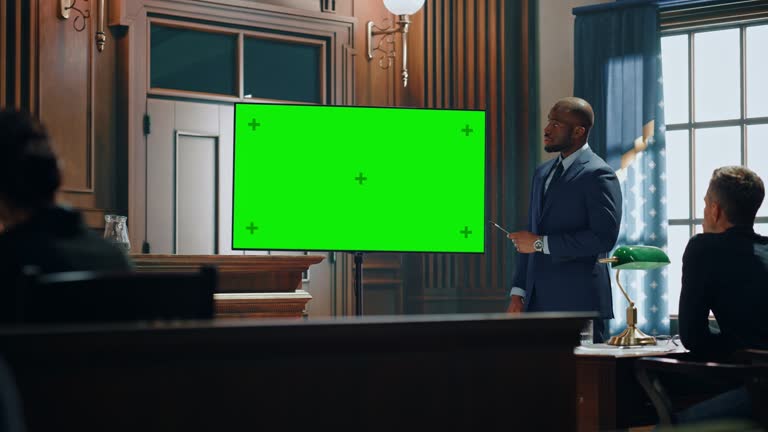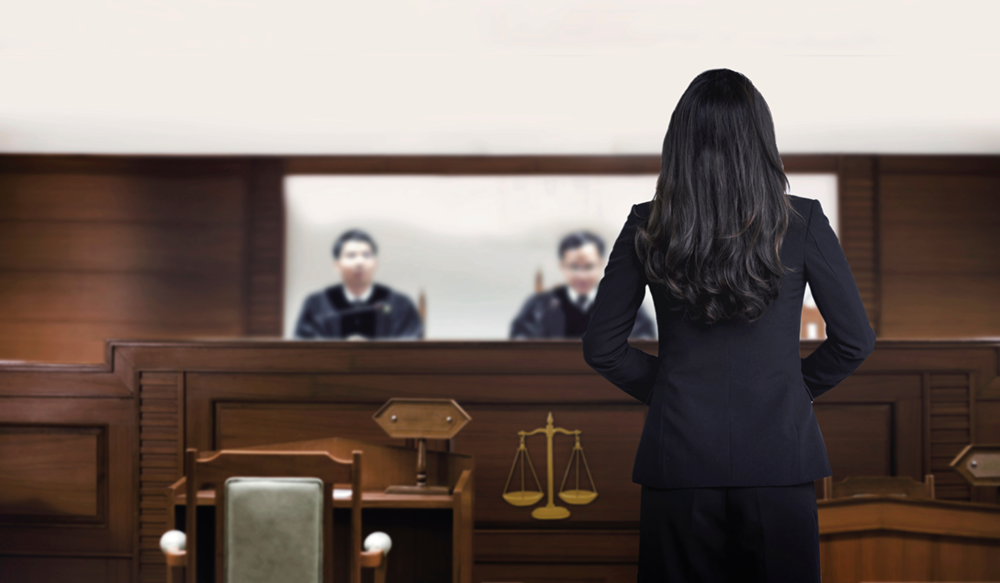Navigating the Intricacies of Test Presentations: Tips for Seamless Shipment and Compelling Debates
In the world of legal process, the art of test discussion stands as a crucial factor of success. As attorneys browse the detailed internet of court dynamics, the capacity to seamlessly deliver disagreements and proof while captivating the court's focus becomes paramount. The intricacies integral in trial presentations need a delicate equilibrium of skill, skill, and technique. By refining techniques that make sure a refined shipment and crafting compelling arguments that reverberate with the audience, lawful professionals can dramatically enhance their campaigning for. In a globe where persuasion preponderates, mastering the ins and outs of test discussions is not just a choice however a necessity for those seeking to dominate in the court room.

Recognizing Test Purposes
To properly navigate a test, it is critical to have a clear understanding of the objectives that need to be accomplished. Prior to entering the court, legal teams must specify their goals and desired results. These objectives work as directing concepts throughout the test, forming strategies and influencing decision-making processes.
Understanding test purposes entails an extensive evaluation of the situation, legal precedents, and the customer's best interests. Trial Presentations. It calls for a meticulous assessment of the facts, determining vital concerns, and expecting possible obstacles. By establishing measurable and details objectives, attorneys can customize their debates and presentations to line up with the wanted outcomes
In addition, a clear grip of trial objectives allows legal groups to prioritize evidence, witnesses, and lawful arguments successfully. It enables for the development of a meaningful story that reverberates with the court and court, enhancing the overall situation presentation.

Organizing Evidence Successfully
Having a clear understanding of test goals lays the foundation for organizing proof effectively in legal proceedings - Trial Presentations. By straightening the discussion of evidence with the desired end results of the trial, lawful groups can reinforce their disagreements and boost their persuasiveness. One essential element of organizing proof is categorization. Organizing proof based on motifs or relevance to details legal components can assist improve the discussion and make complex information extra digestible for the court or court.
One more secret aspect in arranging evidence properly is establishing a sensible flow. Providing evidence in a consecutive and coherent fashion can assist construct an engaging story that supports the lawful arguments being made. Additionally, utilizing aesthetic help such as charts, charts, or timelines can further enhance the organization of evidence and assist in clearing up complex partnerships or series of occasions.
Moreover, making sure that all evidence presented is permissible and appropriate to the case is necessary. Irrelevant or inadmissible proof can detract from the strength of the disagreement and possibly hurt the credibility of the offering event. A thorough testimonial and selection process need to be embarked on to include just the most impactful and legally audio proof in the test presentation.
Crafting Convincing Narratives
Crafting engaging narratives plays a critical function in presenting influential disagreements throughout legal process. A well-crafted narrative has the power to mesmerize the target market, evoke feelings, and ultimately persuade the decision in favor of the presenting event. When constructing a narrative for a test discussion, it is vital to develop a clear story that highlights essential factors and attaches them in a meaningful manner. Begin by describing the facts of the instance in an engaging manner, guaranteeing that the sequence of occasions is very easy to adhere to. Introduce personalities properly, giving background details that helps the target market recognize their actions and motivations. Additionally, incorporating brilliant descriptions and interesting language can bring the story to life, making it more memorable for the discretionary. By weaving with each other evidence, testament, and legal disagreements right into a convincing and natural narrative, lawful professionals can efficiently advocate for their customers and raise the likelihood of a positive end result in the courtroom.
Mastering Aesthetic Aids
Effective use aesthetic help is key to enhancing the effect and clarity of test discussions. Aesthetic aids, when utilized tactically, have the power to simplify intricate info, strengthen essential factors, and leave a lasting impact on the court and court. To grasp aesthetic aids in test discussions, it is important to guarantee that they are clear, succinct, and pertinent to the disagreements being made.
When integrating aesthetic help, such as charts, graphs, photographs, or timelines, into a test presentation, it is you could try this out vital to maintain them visually appealing yet specialist. The visuals ought to enhance the verbal disagreements, providing a visual representation of the info being gone over without overwhelming the audience with unnecessary information.
Moreover, experimenting the visual aids beforehand is vital to ensure a smooth shipment throughout the test. Familiarizing oneself with the content, shifts, and timings of each visual help can aid keep the circulation of the presentation see this site and protect against technological problems that might emerge.
Delivering Impactful Closing Arguments
A compelling closing disagreement acts as the conclusion of a trial presentation, enveloping the core narrative and persuading the discretionary in the direction of a positive decision. To provide an impactful closing argument, it is important to succinctly recap vital factors, highlight the staminas of your instance, and deal with any type of weak points in a critical fashion. Begin by detailing the major arguments that support your customer's setting, stressing why the proof presented throughout the trial sustains your story. It is vital to produce a feeling of communication and clearness, directing the court and court towards the preferred final thought.
Furthermore, incorporating emotional charm can further enhance your closing debate. Ultimately, a well-crafted closing debate should leave a long-term impression, engaging the judge and court to rule in your client's favor.
Final Thought
In final thought, understanding trial presentations involves recognizing purposes, organizing proof, crafting narratives, using aesthetic aids, and supplying impactful closing debates. By carrying out these strategies properly, view it now attorneys can offer their situation perfectly and make compelling debates in the court room. It is crucial to navigate the intricacies of trial presentations with accuracy and ability to attain success in lawful procedures.
By lining up the presentation of evidence with the preferred outcomes of the test, legal groups can strengthen their disagreements and boost their persuasiveness (Trial Presentations). To grasp aesthetic help in test presentations, it is important to guarantee that they are clear, concise, and pertinent to the debates being made
A compelling closing disagreement offers as the conclusion of a trial discussion, encapsulating the core narrative and convincing the judge and court in the direction of a positive decision. Begin by outlining the major debates that sustain your customer's placement, stressing why the evidence provided throughout the trial sustains your story.In final thought, understanding trial presentations entails recognizing purposes, arranging proof, crafting stories, utilizing aesthetic aids, and providing impactful closing arguments.